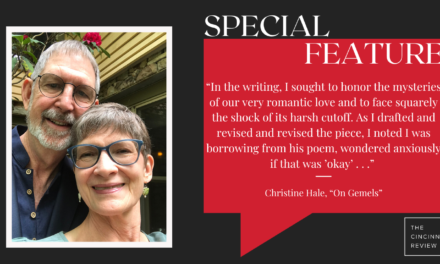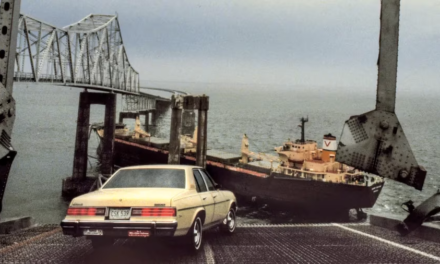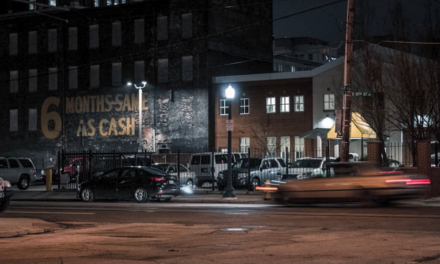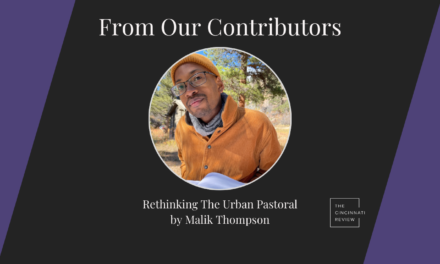Our contributors are cultured folk: They like the 2005 Bordeaux and donkey cheese, and prefer Dvorak to One Direction—well, usually. We did accept a long poem composed of interlocking haiku singing the praises of the youthful Harry Styles‘s floppy hair, but apparently another journal had already taken it. The following contributors from Issue 9.2 are connoisseurs of art, especially the particular images that inspired their work:
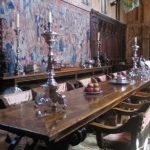 Brian Conn (on his story “The Perfumer”): Last summer I had a residency at I-Park, in rural Connecticut. On the first night, very late, I started wandering around the place in the dark. I ended up in the library, where, in a dusty box in a kind of cubbyhole under the eaves, I discovered an old tourist guide to Hearst Castle. Lots of fading color photos of opulent rooms where it seemed like they must have just finished shooting a cigarette commercial. I spent many nights at I-Park sitting in my writing hut, paging through this guide by the light of a small desk lamp and then looking out at the New England night and thinking I saw will-o’-the-wisps in the forest.
Brian Conn (on his story “The Perfumer”): Last summer I had a residency at I-Park, in rural Connecticut. On the first night, very late, I started wandering around the place in the dark. I ended up in the library, where, in a dusty box in a kind of cubbyhole under the eaves, I discovered an old tourist guide to Hearst Castle. Lots of fading color photos of opulent rooms where it seemed like they must have just finished shooting a cigarette commercial. I spent many nights at I-Park sitting in my writing hut, paging through this guide by the light of a small desk lamp and then looking out at the New England night and thinking I saw will-o’-the-wisps in the forest.
“The Perfumer” is the result of those nights.
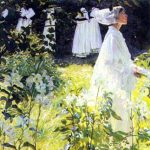 Jordan Smith (on his poem, “A Convent Garden, Brittany”): A couple of years ago, I had my first chance to visit Dublin, and in the National Gallery of Art, I was especially taken with the Irish realists of the early-twentieth century. I know you’re not really supposed to look at art this way, but each painting struck me as a scene from a novel, one of those tangled and perhaps over-subtle studies of leisure-class affections that Masterpiece Theatre might dramatize in a heartbeat. Since as far as I knew this book didn’t exist, I decided to write a set of poems outlining its plot, “Sketches for a Novel,” all in the same form and each starting with one of the paintings. “A Convent Garden, Brittany” is the last of the group, and is after William John Leech’s painting of the same title.
Jordan Smith (on his poem, “A Convent Garden, Brittany”): A couple of years ago, I had my first chance to visit Dublin, and in the National Gallery of Art, I was especially taken with the Irish realists of the early-twentieth century. I know you’re not really supposed to look at art this way, but each painting struck me as a scene from a novel, one of those tangled and perhaps over-subtle studies of leisure-class affections that Masterpiece Theatre might dramatize in a heartbeat. Since as far as I knew this book didn’t exist, I decided to write a set of poems outlining its plot, “Sketches for a Novel,” all in the same form and each starting with one of the paintings. “A Convent Garden, Brittany” is the last of the group, and is after William John Leech’s painting of the same title.
Peter Cooley (on his poem “Possible Body”): Probably “Possible Body” emerges from my writing of ekphrastic poems in the past few years on Rembrandt, Rodin and Michelangelo, a triple header I want to make into a book. I think,  especially, the sculptors play a singular role in my poem for CR. I know I wanted to say something about the body by fracturing the text yet still maintaining coherence. I think, in all honesty, that the hurricanes in New Orleans in the past few years have done their part in my embracing discontinuity. My wife and I stayed through Katrina and just recently Isaac. But to read my Katrina story you will have to read my book Night Bus to the Afterlife, due out from Carnegie Mellon in 2013.
especially, the sculptors play a singular role in my poem for CR. I know I wanted to say something about the body by fracturing the text yet still maintaining coherence. I think, in all honesty, that the hurricanes in New Orleans in the past few years have done their part in my embracing discontinuity. My wife and I stayed through Katrina and just recently Isaac. But to read my Katrina story you will have to read my book Night Bus to the Afterlife, due out from Carnegie Mellon in 2013.
(Read an appreciation of Cooley’s poem here.)


